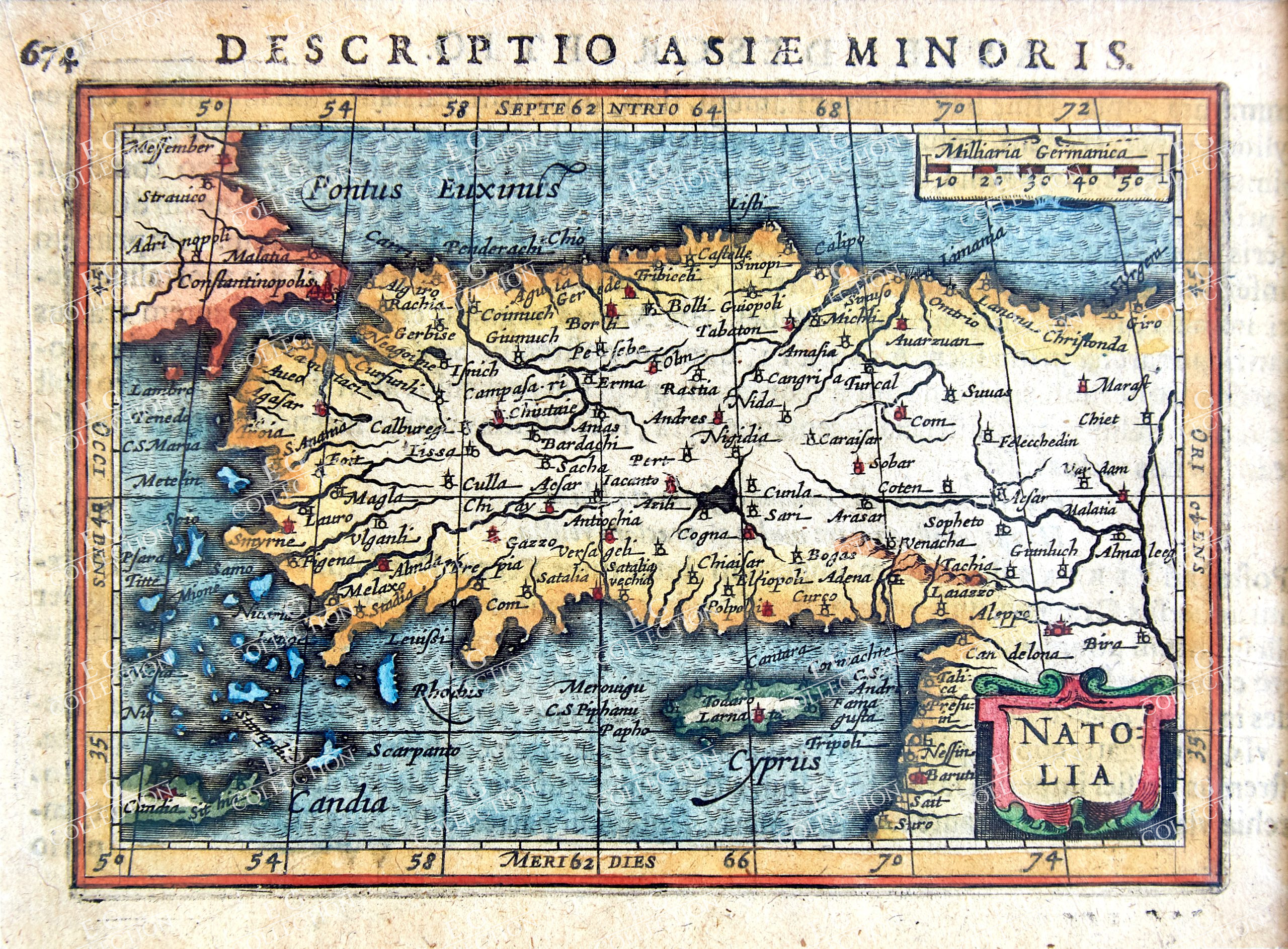BERTIUS
NATOLIA
DESCRIPTIO ASIAE MINORIS
Petrus BERTIUS
Amsterdam, 1616
10 x 13,5 cm.
Coloured. Miniature map of Turkey, with Cyprus. Hondius engraved new plates for his edition of the Bertius atlas ‘Tabularum Geographicarum Contractarum’, which he sold alongside the Mercator ‘Atlas Minor’. The new plates had thicker borders with graduations for longitude and latitude.
Petrus Bertius was a Flemish historian, theologian, geographer, and cartographer. Known in Dutch as Peter de Bert, Bertius was born in Beveren. His father was a Protestant preacher and his family fled to London around 1568. The young Bertius only returned to the Low Countries in 1577, to attend the University of Leiden. A bright pupil, Bertius worked as a tutor and was named subregent of the Leiden Statencollege in 1593. He ascended to the position of regent in 1606, upon the death of the former regent, who was also Bertius’ father-in-law. However, due to his radical religious views, he eventually lost his teaching position and was forbidden from offering private lessons.
His brothers-in-law were Jodocus Hondius and Pieter van den Keere, who were both prominent cartographers. Bertius began his own cartographic publishing in 1600 when he released a Latin edition of Barent Langenes’ miniature atlas Caert Thresoor (1598). He published another miniature atlas that first appeared in 1616.
By 1618, Bertius was named cosmographer to Louis XIII. He converted to Catholicism and took up a position as professor of rhetoric at the Collège de Boncourt (University of Paris). In 1622, Louis XIII created a chart of mathematics specifically for Bertius and named him his royal historian. He died in Paris in 1629.
$ 800,00




 No products in the cart.
No products in the cart.